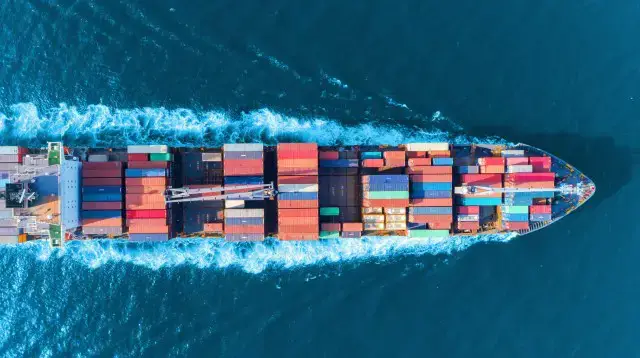"Understanding more about monetary policy and the economic regime that you're living under can help ease some of the fundamental uncertainties [that have been] prevalent since COVID, and help you make better decisions in your day-to-day life."
Show More Show Less View Video Transcript
0:00
Never before have economists been so divided about the outlook for the global economy
0:05
A lot of people talk about the soft landing and we're talking about a recession
0:10
Not necessarily. I think there's still opportunity for the market to go higher
0:16
We think it's the biggest slowdown of the global economy in 80 years
0:21
The economy has entered into a new era highlighted by supply chain shortages
0:26
rapidly rising inflation, and really quick increase in interest rates that have plagued
0:33
the economy since 2020. And consumers, businesses, governments are more uncertain than they've ever
0:40
been. Monetary policy and the actions of central banks like the Federal Reserve are certainly the
0:48
biggest lever in the economy at any point. And so it's impossible to understand the changes that
0:56
we've gone through over the last four years and, in a broader sense, over the last two decades
1:02
without understanding the shifts in monetary policy over that time period. I'm Joey Politano
1:08
I'm an economic yst, a data journalist, and the writer behind Apricotos Economics
1:13
So to understand the new normal, it's first important to understand the old normal
1:26
the very old normal that the global economy existed in before the 2008 recession
1:34
Normally, a free market economy is going to be demand constrained. That's a fancy word just to say that what's built, made, and sold is set largely by the level of demand for those specific goods and services
1:48
With some surplus capacity, surplus inventory, and in some cases surplus workers
1:56
Meaning factories could run at 80% normally, so they have room to run at 100% in case there's a surge in demand that can then absorb by producing more
2:07
And this is really what Hungarian economist Janos Kornay explored in examining the free market system
2:16
The state of default is a state of surplus. Take autos, for example
2:21
In a normal time period, the amount of autos produced is very sensitive to demand for new and used vehicles
2:30
Auto manufacturers will almost always have some spare capacity. They have the ability to produce, say, 14, 15 million cars
2:39
but in average year, they're only going to produce, say, 10 to 12 million
2:44
Because the economy is demand it really important to get the level of demand right Getting the level of demand right can be hard but that the job that the Federal Reserve has when setting interest rates of monetary policy
3:02
And they have to set the level of demand to the right amount in order to hit two targets, price stability and full employment
3:12
But if the level of demand in the economy is too low
3:17
you end up in this downward spiral where workers get laid off, demand falls further, less demand means more layoffs
3:24
and no downward spiral in American history has been bigger than the 2008 recession
3:41
financial crisis. In the lead up to the 2008 recession, the U.S. was focused on trying to
3:49
cut back stimulus, reduce spending and tighten monetary policy. And as the recession was happening
3:57
they reacted very slowly. Administration officials are talking with lawmakers looking for a way to
4:03
move forward after the defeat of the 700 billion dollar rescue plan. What that meant was that the
4:08
level of demand in the economy rapidly fell below normal levels into this demand shortage
4:17
Let's zoom back in on the car example. People are getting laid off. Interest rates are still high
4:23
The ability to afford a car is very low. Prices for used cars start dipping as people get laid off
4:28
and therefore demand for new cars starts falling off a cliff. That demand shortage then reverberates
4:35
through the industry. People are laid off, factories start closing, investment starts
4:39
dipping dramatically, and that in turn further exacerbates the demand shortfall. And that's how
4:47
you ended up with the 10 to 12% unemployment that was seen post-2008
5:05
Country after country, Europe's retreating into lockdown. Coronavirus officially hitting the U.S. Here's what we know
5:11
It's early 2020. The U.S. has had more than a decade of very slow growth, very weak employment
5:20
and COVID-19 is just hitting the entire country. This time, the Federal Reserve and policymakers in Washington
5:29
are key to not repeat the same kind of mistakes they had in 2008
5:33
The Federal Reserve and the federal government come out swinging You have the CARES Act the American Rescue Plan the massive amount of stimulus checks the extremely rapid response by the Federal Reserve lowering interest rates
5:47
loosening monetary policy, doing direct lending to affected businesses, governments, and institutions
5:54
All of that serves as a giant jump to the U.S. economy
6:00
This was enough to break us out of that demand shortage, but it meant we entered into a new kind of problem, a supply-constrained economy
6:11
This is something that's very rare in U.S. history outside of wartime
6:18
What a supply-constrained economy means is that it's not constrained by demand
6:24
it's constrained by your access to materials, labor, transportation, and other resources
6:30
which were in extremely high demand during COVID. For example, when the pandemic hit, global car production had to stop and then it had to rapidly start up
6:42
As it's restarting, you have this massive surge in stimulus from the CARES Act, from the American Rescue Plan, from stimulus checks and from low interest rates, which meant demand for cars recovered rapidly
6:55
At the same time, demand was spiking. Supply was actually cratering. The demand shortage of the 2010s led to an underinvestment in car manufacturing in the U.S. for more than a decade
7:10
And so when the pandemic hit, there was a lack of spare capacity, a lack of shock absorbers
7:15
And so you got a rapid, rapid surge in used vehicle prices, followed by a significant increase in new vehicle prices
7:24
followed by vehicle repair, vehicle insurance, and so much more until the shock reverberated throughout the entire economy
7:32
So in a really important way, the demand shortage of the 2010s led to the supply-constrained environment of the early 2020s
7:45
When Kornay studied supply-constrained economies, he cited the endemic shortages of the Soviet Union
7:53
where people struggled to get basic necessities, queue times were long, and stores regularly ran out of inventory
8:01
That doesn't happen in the same way in market economies. Instead, you get these massive increases in prices as producers try to balance demand with supply
8:14
So the post burst of inflation especially the burst in energy food consumer goods electronics cars was a direct result of this supply environment enwrapping the entire global economy all at once This is part of why inflation was so global so sudden and caught so many off guard
8:43
This kind of supply-constrained environment had not been seen in most countries for decades
8:51
if not longer. So how do we get out of a supply-constrained economy? Since 2022
8:59
the Federal Reserve has been raising interest rates and tightening monetary policy in order to catch up with inflation. In an ideal world, price increases will return
9:09
to the kind of normal levels we saw before the 2008 recession without the kind of employment
9:16
losses and shrinking economy that we saw during the 2010s. Easing out of the supply constraint era
9:24
is going to mean different things to different people and different organizations. For individuals
9:30
it'll deliver important reductions in cost of living, inflation, and the shortages that have
9:34
plagued the economy since 2020. But it will also mean a cool down of the rapid wage growth and
9:42
hiring that benefited people so much during the early pandemic. For governments, there is a renewed
9:50
focus on securing supply and industrial policy. Think about the CHIPS Act, which is spending
9:57
billions of dollars to try to secure semiconductor manufacturing supply chains that crippled U.S
10:02
industry during 2021-2022. Or the Inflation Reduction Act, another set of industrial policies
10:09
meant to secure supply chains in cleantech industries. Businesses in this new era are going to feel a lot more cross-pressured
10:20
A company like Samsung not only has to contend with the domestic politics of South Korea
10:26
but pressures from countries like China and the U.S. to invest in one and not invest in the other
10:32
And so lots of places are going to have to make tough decisions about where they choose to build
10:39
and how they choose to organize their supply chains. The economy is not a static thing
10:46
And so understanding more about monetary policy, understanding more about the economic regime
10:51
that you're living under can help ease some of the fundamental uncertainty
10:56
that's been so prevalent since COVID and help you make better decisions
11:01
in your day-to-day life. Want to dive deeper? Become a BigThink member and join our members-only community, watch videos early, and unlock full interviews
#Business & Industrial
#Finance
#News



